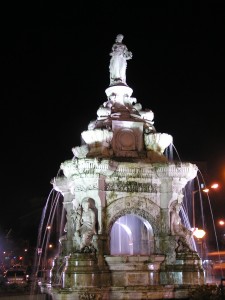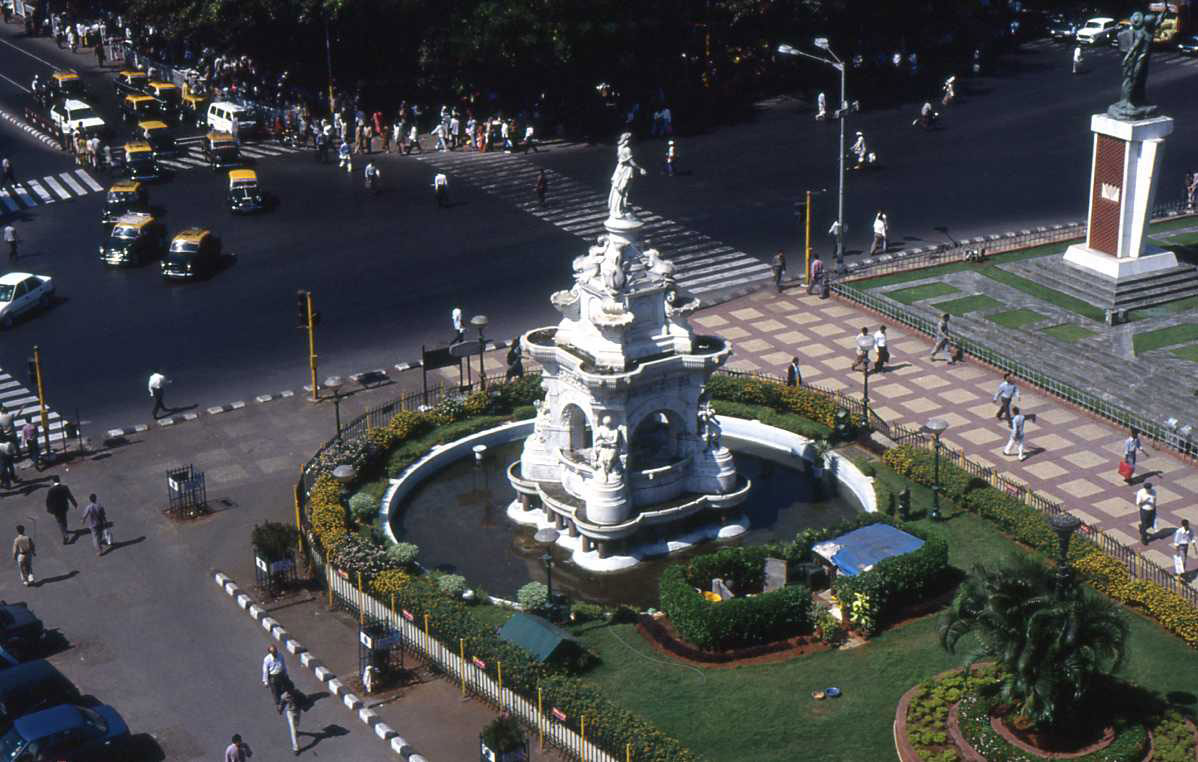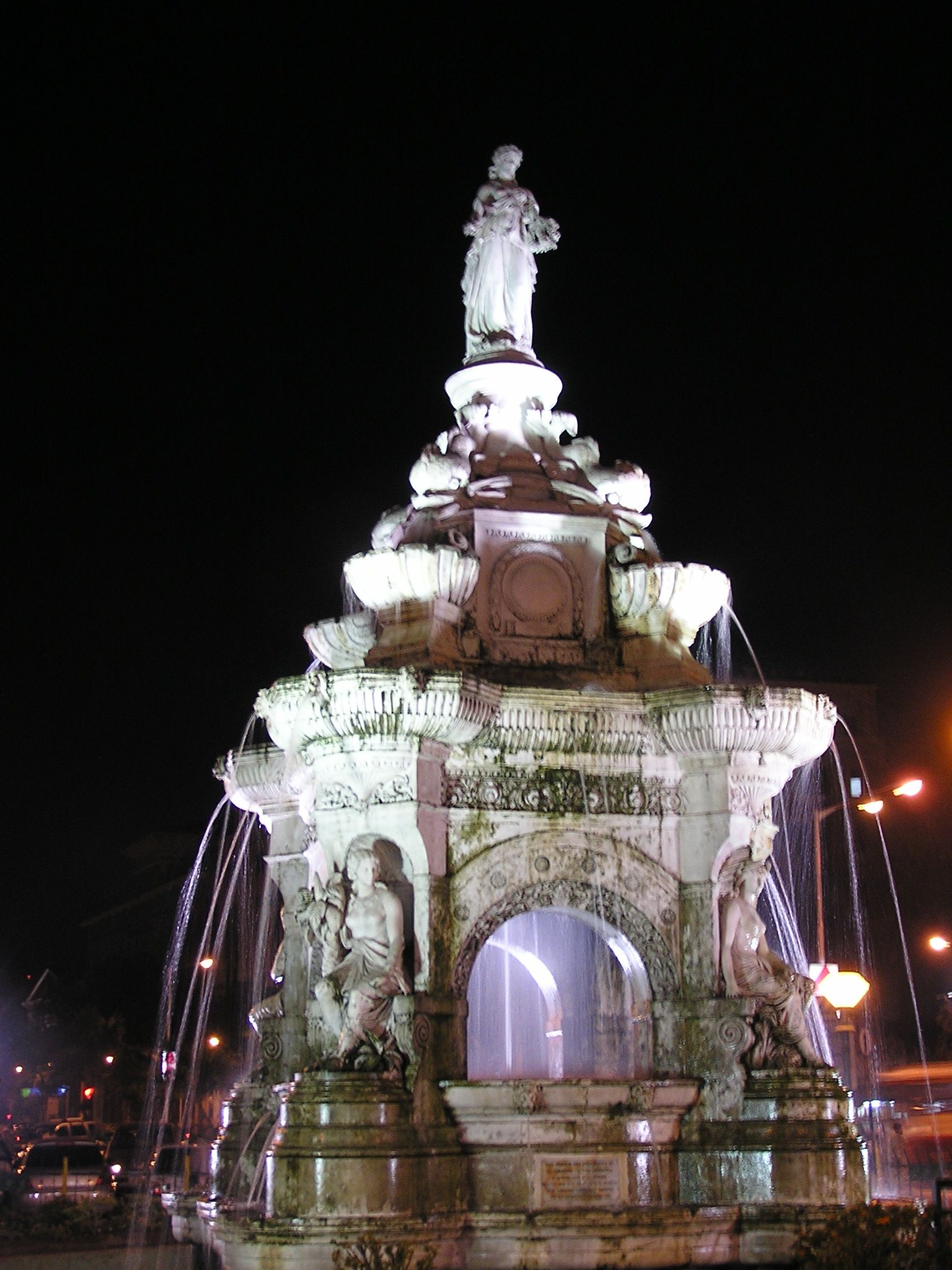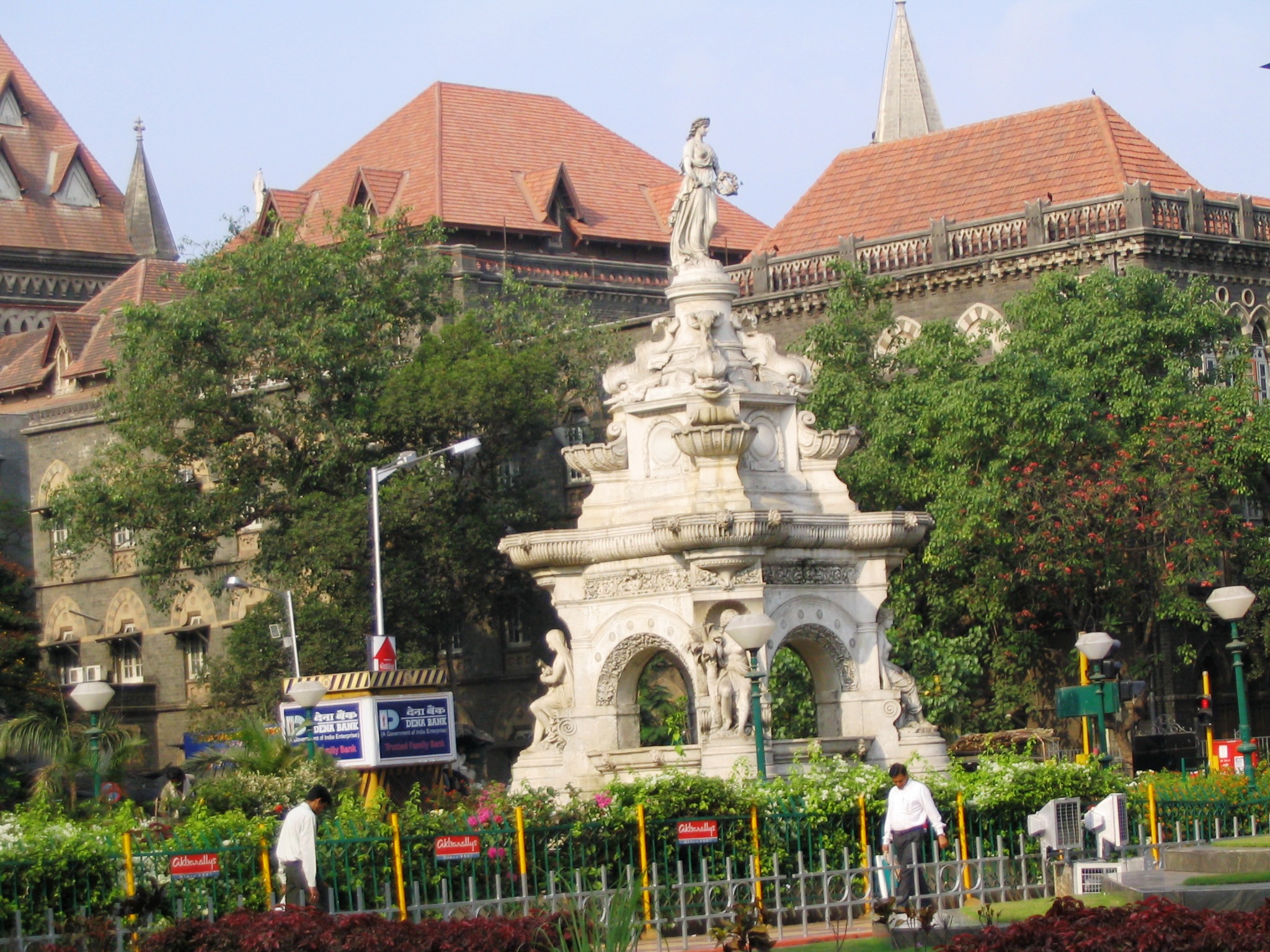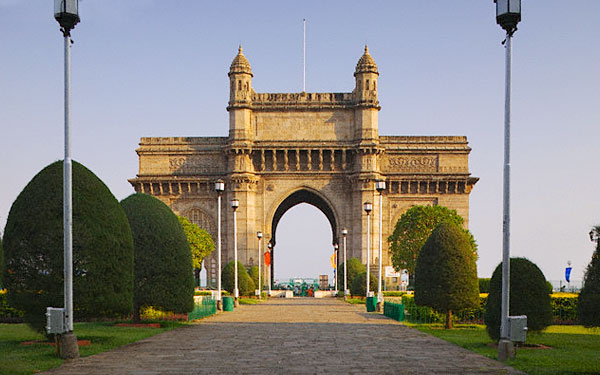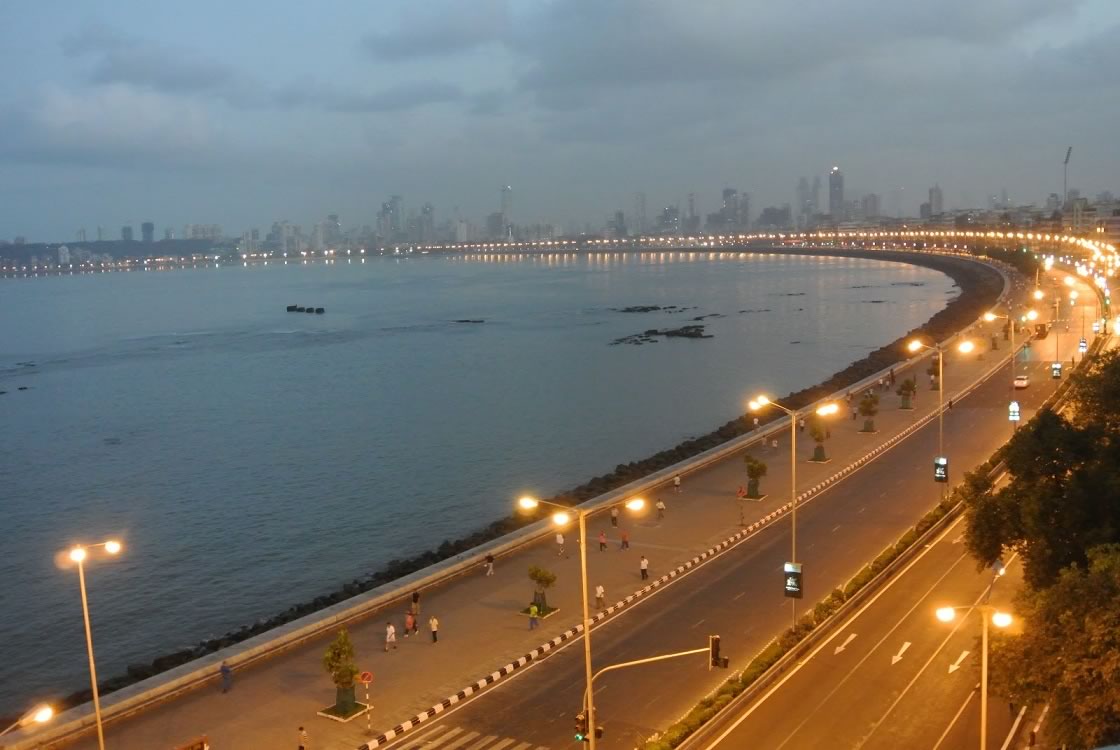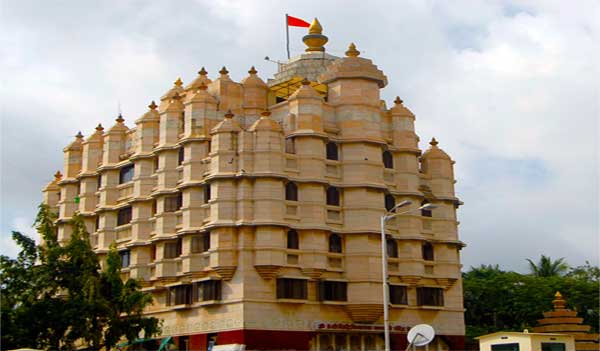India /Maharashtra /Mumbai City /Mumbai
Sight Address : Flora Fountain,Kala Ghoda, Fort Mumbai, Maharashtra.Edit
Detail InformationEdit
Flora Fountain, at the Hutatma Chowk (Martyr’s Square), is an ornamentally and exquisitely sculpted architectural heritage monument located at the southern end of the historic Dadabhai Naoroji Road, called the Mile Long Road, at the Fort business district in the heart of South Mumbai, Mumbai, India. Flora Fountain, built in 1864, is a fusion of water, architecture and sculpture, and depicts the Roman goddess Flora. It was built at a total cost of Rs. 47,000, or 9000 pounds sterling, a princely sum in those days.
HistoryEdit
The fountain originally intended for the Victoria Gardens, is now surmounted by the figure of Plenty (“Courtesy of Special Collections, University of Houston Libraries”). History of the Flora Fountain is traced to the time when the Old Mumbai Fort was demolished in 1860 as part of the then Governor, Sir Bartle Frère’s efforts to improve civic sanitation (municipal improvements) and the urban space requirements of the growing city. Prior to this demolition, the Fort had been built between 1686 and 1743 by the British East India Company with three gates (the Apollo Gate, the Church Gate and the Bazaar Gate), a moat, esplanade, level open spaces on its western fringe (to control fires) and residences. A small road called the Hornby Road, named after the then Governor of Bombay (Mumbai) between 1771 AD and 1784 AD, also existed at the old Fort area. Consequent to the demolitions, the Hornby road was widened into a broad avenue and on its western side commercial plots were developed to build new commercial buildings in Neo Classical and Gothic Revival designs. The Hornby road, now named as Dadabhai Naoroji Road (D.N.Road), developed into a veritable sight of colonial splendour with Crawford Market linked to the Victoria Terminus anchoring the northern end and the Flora Fountain, forming the southern end of the Mile Long Road.The Flora Fountain was erected at the exact place where the Church gate (named after St. Thomas Cathedral, Mumbai ) stood before its demolition along with the Mumbai Fort. It was constructed by the Agri–Horticultural Society of Western India, out of a donation of Rs 20,000 by Cursetjee Fardoonjee Parekh. Designed by Richard Norman Shaw, it was sculpted in imported Portland stone by James Forsythe. A white coat of oil paint has to some extent marred the antiquity of the structure.The fountain was originally to be named after Sir Bartle Frère, the Governor of Bombay at the time, whose progressive policy had resulted in many of the great public buildings of Mumbai.However, the name was changed before the fountain was unveiled as Flora Fountain, named after Flora (mythology), a Roman Goddess of flowers and the season of spring; her majestic and pretty Portland stone statue adorns the top of the fountain. The four corners of the fountain are decorated with mythological figures. The fountain was originally intended to be built at the Victoria Gardens at Byculla but, in 1908, the grass plot and the palm trees that had camouflaged the fountain were cleared for creating space for pedestrians and horse–traffic between the tram lines and the kerb of the fountain.
Must SeeEdit
Attraction.
Visiting TimeEdit
N.A.
Closed OnEdit
N.A.
Best Season to VisitEdit
October to March.
Best Time To VisitEdit
Morning , Afternoon.
Time Required for SightseeingEdit
Minimum 30 minutes.
Ticket Required : No Edit
Individual National Adult Rs. : N.A.
Kids Rs. : N.A.
Individual Foreigner Adult Rs. : N.A.
Kids Rs. : N.A.
Still Photo Camera Rs. : N.A.
Video Camera Rs. : N.A.
Guide Required : No Edit
Approximate cost: N.A.
Dress Code (If Any) : No Edit
Dress Require: N.A.
Restaurants NearbyAdd / Edit
How to ReachEdit
Taxi : Metered taxis are a useful mode of transport in Mumbai. Since they are metered, they are economical and also relatively comfortable. However night fares are more expensive and charts for calculating fares are available online. It might be sensible to use one particular taxi throughout the stay, as most taxi drivers have mobile phones they can be contacted easily. While the regular tariff is Rs 14 per km, the night charges is around Rs 18 per km. Private taxi services are also available and they ply according to the government rates. Some of the main operators are – Meru Taxis- Contact No (+91 2240520100), Mumbai taxi- Contact No (+91 2244224422), International airport cabs Contact No (+91 228366767), Domestic airport cabs-Contact No (+91 226152257), Classic taxi service- Contact No (+91 93711067115).
Bus : BEST bus services are second most extensive intra city transport system. Mumbai has an excellent road transportation system. State owned buses connect Mumbai to all neighbouring points. Many Deluxe and Super Deluxe buses are available to travel in and out of the city. Bus fare is about Rs 3 to 4 per kilometer.
Train : Mumbai is the headquarters of Indian railway system. Chhatrapati Shivaji Railway Station is the major one which connects all most parts of Indian cities to Mumbai. Other railway stations in Mumbai are Dadar and Kurla, and Churchgate. Suburban railway is the backbone of the transport system. Three main railway lines connect most of the city. Trains are always on time and economical, however they might be crowded in peak hours. The basic fare may range from 5 INR to 100 INR. The trains run from 4 am to 1pm, and there are trains arriving at the station every five minutes. It is also advisable to take care of valuables even in the first class section. Rush hour constitutes office timings from 8 am to 11 am and 5 pm to 7pm. The traveller should avoid the rush hour. Women travellers can make use of the separate women compartments and they might be less crowded than the general compartments.
Air : Mumbai has its own domestic and international airport, known as Chatrapati Shivaji international airport , Located 30 km from centre of the city, Nariman Point and 4 km from the domestic terminal of Santa Cruz, this airport operates 24X7. Almost all airlines provide services to Mumbai. Mumbai is well connected to all major cities in India and also connected to many cities abroad including Singapore, New York, Bangok, Hong Kong and to many gulf cities. Taxi and Autorickshws is easily available from airport to City. Inquiry number for domestic airport – 26264145/26264000. Airlines no. GoAir- Tel.No:55420082, Jet Airways- Tel.No:22823275, Kingfisher Airlines Ltd- Tel.No:56499393 Ph No: 011-3295126. Air India -Ph: 91 22 2279 6666, Air Sahara- Ph No: (022) 22836000, (022) 56981111.
Others : Auto richshaws: The auto rickshaws of Mumbai are the most common means of transport and are cheap also. they charge Rs 9 for the first 1.6 km and Rs 5 for km covered afterwards. The night charge is 25% more of the total charge. However, one needs to be careful as these auto rickshaws use longer routes in order to increase their fare amount.
Things to CarryEdit
- It is advisable to take lots of drinkable water with you from Mumbai itself and also camera.
Safety / WarningEdit
- All Travellers should be absolutely careful about their handbags and mobile phones.
- For women, where available, use women’s only areas/compartments on public transportation. Never ride in the general men’s compartment.
- If not taking a prepaid taxi or a metered taxi/rickshaw, negotiate the fare before taking off.
HelplineEdit
- Police Control Room : 100
- Crime Branch Mumbai : 103
- Navi Mumbai Police Station : +91-22-27600101
- Ambulance : 102
- Fire : 101
